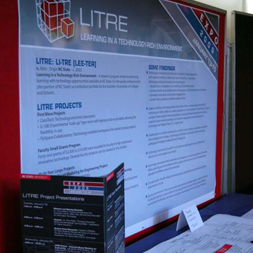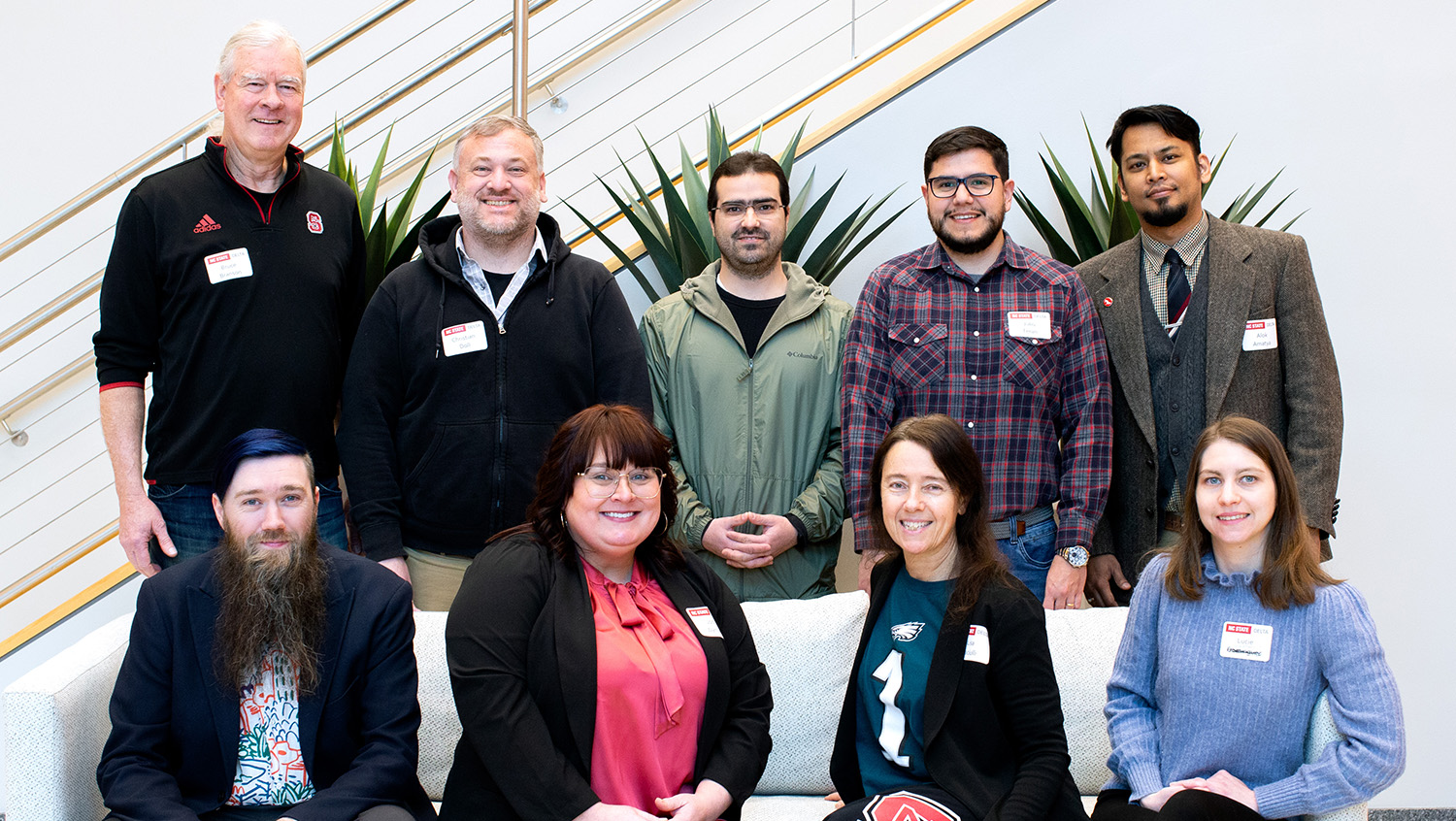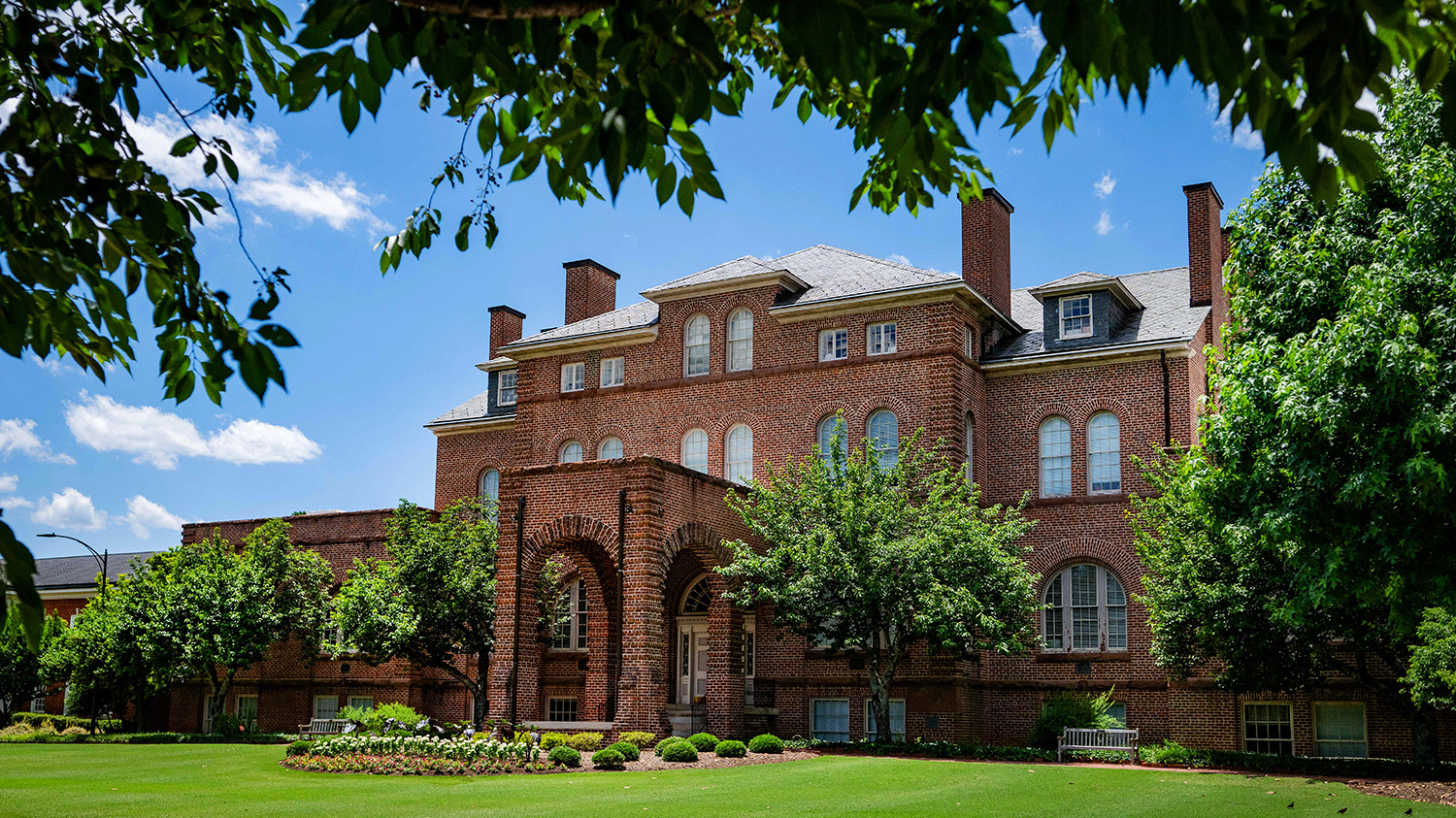LITRE Expo 2009: Looking Toward the Future and Learning from the Past

Almost everyone at NC State takes Learning in a Technology-Rich Environment (LITRE) for granted now. As a flagship university for science and technology, of course we investigate ways to use the Web and other digital media to enhance our teaching and learning!
At the 2009 LITRE Expo, NC State will have the chance to glimpse how far the university has come since those days and to celebrate recent achievements in the use and assessment of teaching and learning with technology.
Beginning with the keynote speech by Dr. Chris Dede from Harvard University, the LITRE Expo will offer the opportunity to discuss emerging technologies and their impact on teaching and learning in higher education. Once again, new technologies are raising questions about pedagogical practice and institutional relevance.
For example, how well will NC State meet the challenge of educating students with “neomillenial learning styles” developed through their fluency with interactive and immersive technologies? How do students view the future of university learning when they can construct knowledge in collaboration with experts and peers around the world – and easily build a community of learners on Ning.
Tough questions. Fortunately, NC State can look to its past for insight into how to creatively respond.
A LITRE Genealogy
The LITRE program was officially launched in 2004 with the publication of “Learning in a Technology-Rich Environment: A quality enhancement plan for North Carolina State University.” The plan was developed as part of the university’s reaccreditation by the Southern Association of Colleges and Schools. The origins of LITRE and the competencies, campus culture and institutional resources that made it possible go back much further than that, however.
In 1997 NC State launched Project 25, an initiative to put 25 courses online in less than six months for the fall 1997 semester. With a mandate from then-Provost Phillip J. Stiles, funding from the university, and support from the NCSU Libraries and the former Computing Center, Project 25 was an institutional response to external challenges and technological change. It was also NC State’s first coordinated teaching with technology project.
The project was a success. Not only were 29 courses put online, if Project 25 were a parent, it now has many offspring. LITRE is a direct descendant.
Project 25 required intense effort, especially on the part of the faculty participants and support staff. Twenty-nine faculty from a broad range of disciplines received seed grants to redesign their courses for the Web. Last April the Teaching and Learning with Technology Roundtable (TLTR), now celebrating is 10th year on campus, held a reunion, “Project 25: 10 Years Later”.
As participants reminisced about their experiences, the significance of Project 25 as a catalyst for change became clear. Before Project 25 there was growing interest in emerging learning technologies and online distance education (DE); “maverick” faculty across campus were experimenting with the Web to enhance their teaching; technical staff and faculty were developing new online teaching tools; and several colleges and departments supported efforts to use new technologies for lecture-based and student-centered pedagogies.
But before Project 25 there was no coordinated institutional support for online teaching. In fact, instead of working to foster pedagogical innovation, campus policies restricted the number of hours faculty could teach DE courses, and DE courses were administered under continuing education, not campus academic curricula. There were few central IT staff dedicated to supporting faculty efforts to teach with technology, and there was no campus-wide group to foster dialogue and collaboration among faculty, staff and administrators interested in these efforts.
As a result of Project 25, Vice Provost Frank Abrams, Project 25 co-chair Prof. Lavon Page and others worked to change outmoded university policies to favor the development of online and DE courses. Provost Stiles created the Learning Technology Service (LTS), led by two former Project 25 leaders Carolyn Argentati and Harry Nicholos, to support faculty use of technology for teaching. The LTS became the Distance Education and Learning Applications (DELTA) organization in 2000, led by Vice Provost Tom Miller. Following the success of Project 25, Dr. Sarah Stein formed the TLTR in 1998, a group that still welcomes all faculty, staff and students interested in education and technology. In addition to these institutional changes, there was also a culture change. Project 25 marked the acceptance of teaching and learning with online technologies as part of mainstream educational practice.
The link between Project 25 and the LITRE program is apparent in the number of people who participated in both. For example, Dr. Hugh Devine, one of the Project 25 faculty, was co-chair of the of the original LITRE planning committee; Carolyn Argentati and Sarah Stein served on its steering committee and Lavon Page led the initial LITRE implementation efforts. Other Project 25 faculty have participated in LITRE-sponsored research projects.
The campus organizations that sponsored Project 25 – the Office of the Provost, NCSU Libraries, the Computing Center (now the Office of Information Technology) – were also heavily involved in the initial LITRE planning and implementation.
Those attending the TLTR event in April reflected on the lessons learned from Project 25. “Both Project 25 and LITRE were faculty-driven,” stressed Lavon Page. Project 25 also taught the importance of administrative vision, university investment, staff engagement, and support for faculty innovation.
As visitors to the LITRE Expo discuss the present and future of learning in a technology-rich environment, there is an even more valuable inheritance from Project 25 to remember – it’s the overarching commitment to improving student learning.
- Categories:


